Just thrice more!

This week: Summer sun and winter rain; Red flowered Jasmine; Just thrice more; Garden plans; Path work; Earth Hour 6O+;
Week 13 of 2019 already – a quarter of the year has gone! The temperature is rising daily and by 11:30 it’s too hot for me working in direct sunlight. Fortunately I have a lot of shade jobs to do, for example writing…
So as the early summer is here I’m changing my routine. Having been outside since 8am today, I have come in to format this week’s text after lunch, and before I start again outside.
Summer sun and winter rain
The water in my solar water tank was boiling last Saturday afternoon, so on Sunday I put the covers on, to cover ⅔ of the highly efficient tubes.
I’d like to divert grey water from the shower to provide irrigation, but need to work out how.
There was a discussion on BBC Radio this week about water shortages in the UK within 25 years because of climate change.
And on the same day there was an article about the Orkney Islands where they have too much renewable energy, to the point they are now manufacturing their own hydrogen and using it to power vehicles, as an alternative to oil based petroleum products.
With thousands of hours of sunshine every year – Otok Hvar boasts more sunshine hours than anywhere else in the Adriatic – so it is disappointing that there is not more use made of the sun as a renewable resource. But it doesn’t solve the lack of rain.
However, back to the BBC discussion with Sir James Bevan, head of the UK Environment Agency. He recommends homes using not more than 100 litres of water per day. I’m pleased to say, that even with irrigation, I seldom use more than 50 litres a day. But being able to generate electricity from solar power, to run the water pump from my rain water cisterns is one of my “renewables” aims.
At the end of our winter wet period, we are around 50 litres of rain (50 mm) per square meter down on the average for the past five years. So in the case of my 1,000 square meter Top orchard, that is 50,000 litres of precipitation.

If you want to imagine 50,000 litres, think of one of these!

November, December and early January were much wetter than average, but just when plants are waking after winter, the level of precipitation has dropped and the soil is already quite dry, even this early in the year.
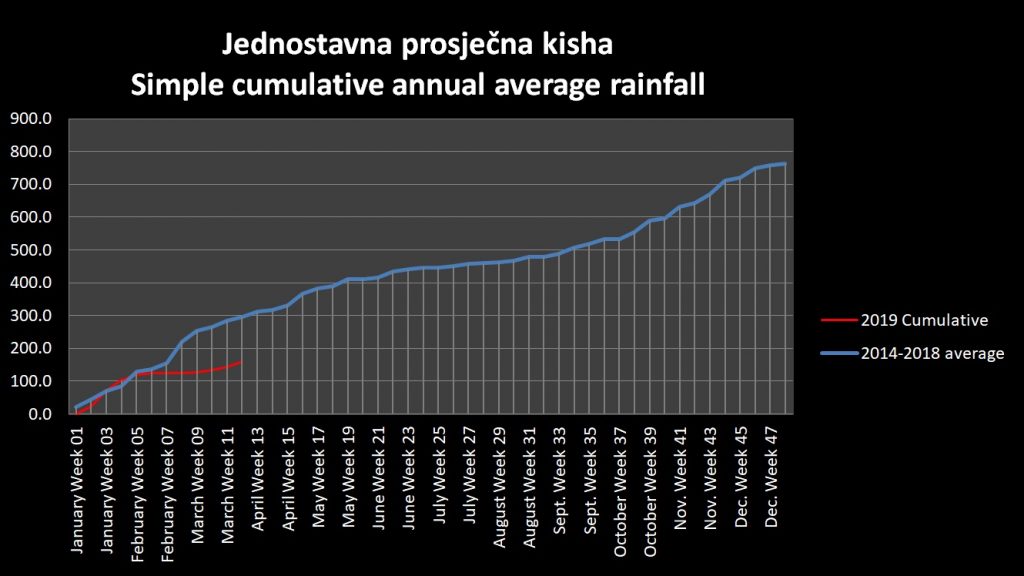
This paints an even bleaker picture, with the rain deficit being 150 mm or 150 litres per square meter.
Red flowered Jasmine
I’ve continued digging out good soil where the pathway into the orchard will go. There is a clear boundary 15 cm or so deep, where the top soil turns to subsoil. This rich orchard soil has a lot of worms in it. This is the first place I have found on my land where there are any. In the citrus and drupe orchards there is a complete dearth of worms.
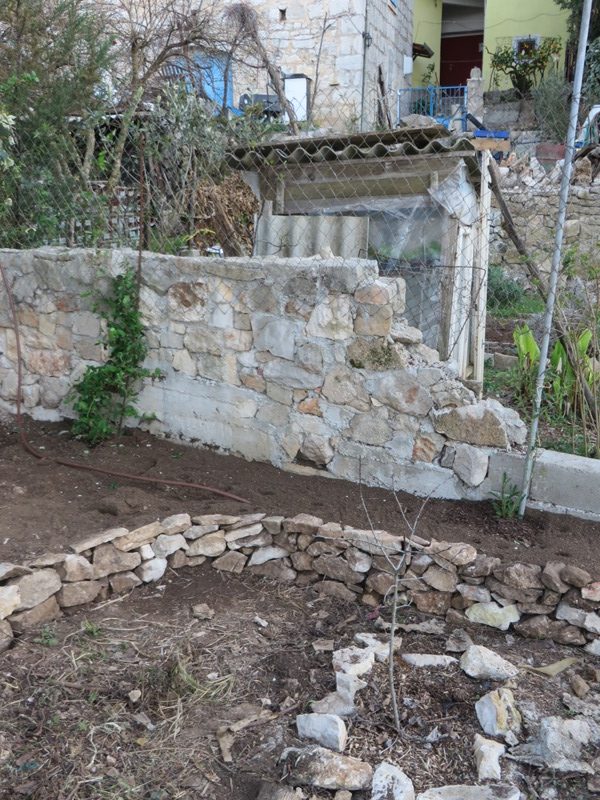
After riddling the soil to remove small stones, roots and other debris, it is going alongside the boundary wall. As I’ve been filling in behind the retaining wall this week, I’ve planted up more shrubs.
Forsythia intermedia and Yellow Dogwood, Cornus stonifera Flaviramea have all been planted.

I also added an extra support post for the wire netting for my climbers. I am concerned that when I have Jasmine and Honeysuckle covering it, the weight will be too great without more support. But having used the last of my long poles, I used a shorter one, but firmly attached it to the stone wall with brackets instead of it being driven into the soil.
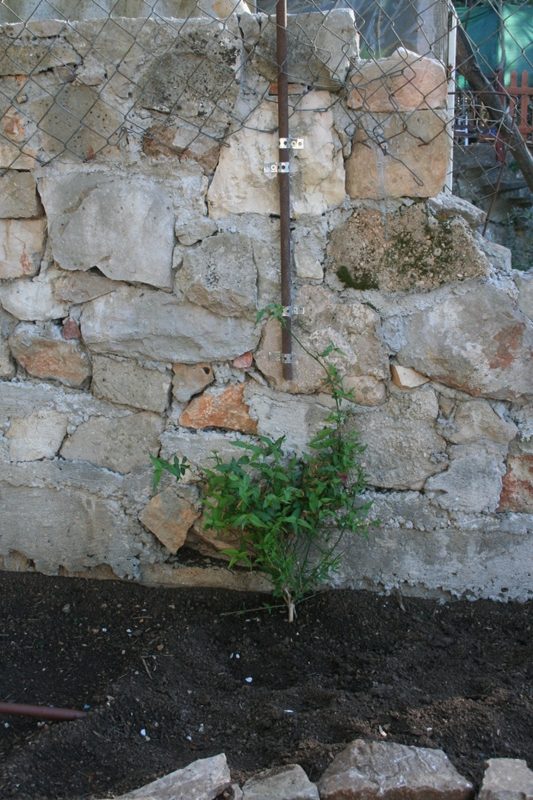
There was a little rain overnight Monday into Tuesday and I wanted to get more plants in so they benefit from the natural moisture. If as it seems, we are going from a drier than average winter season into the summer season, which is hot and dry anyway, I will have to keep these plants irrigated until they have firmly established themselves.
I would like to have trailing wall flowers along the edge of the rockery wall, so have planted some purple Aubretia, a Balkan native, to see how it does. These are seeds you plant on the soil surface and moisten.
One of my concerns is that in riddling the soil, I will have opened the weed seed bank. So to be sure which young seedlings are seeds I have planted, and which are not, I used the old gardening trick of pressing a long cane into the soil to make a straight furrow and planted the seeds in the centre. There are no straight lines in nature, so using this method I hope to be able to tell the random weeds from the planted seeds.
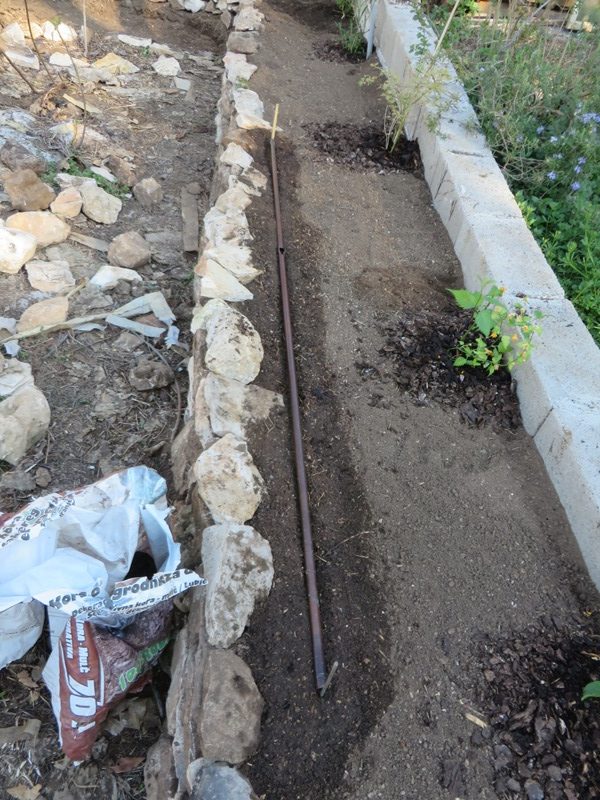
After raking and levelling to a fine tilth, I put a piece of damaged water pipe along the front edge of the rockery where I wanted to sow the seeds, pressing it into the soil to make an indentation.
I’m planting very fine seeds so rather than shake the packet and have a whole bunch come out, the best way is to have some in the palm of your hand then take a pinch between your finger and thumb and rub gently over the indented soil. Your digits are sensitive enough to feel individual seeds and the action of rubbing releases them.
The seeds are so fine that just by watering them with a fine rose will wash them in to the correct depth. The fairly gentle rain we had the next day finished the job.
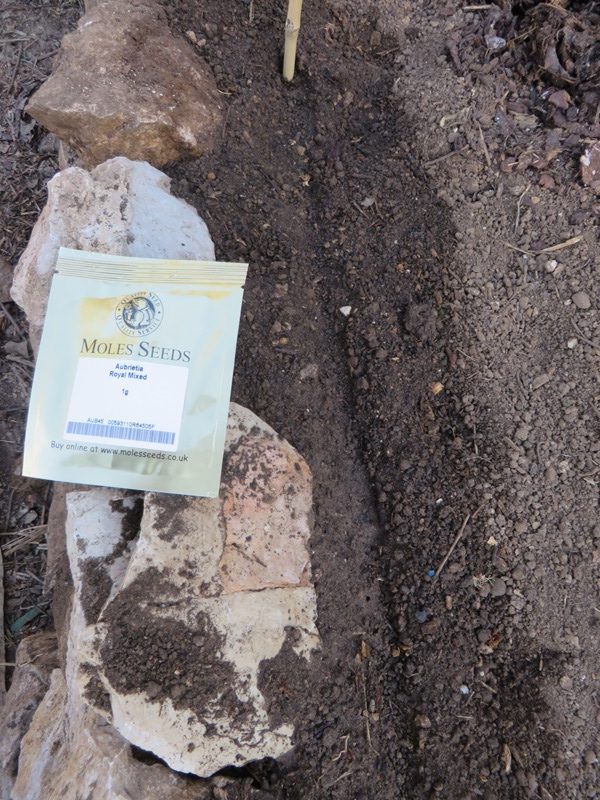
I marked the start and finish of the row so when I see a near straight line I know they are seedlings, not weedlings. Elsewhere I planted Honesty seeds, Lunarua annua, using the same method.
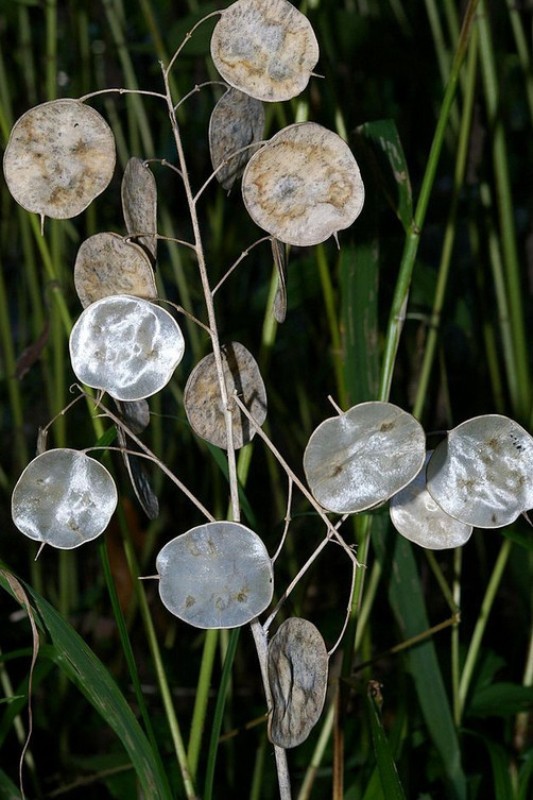
Just thrice more: Time for a change
Alongside the utter UK Governmental chaos that is BREXIT, and the UK didn’t leave the EU as planned last night, the European parliament agreed this week that the biannual changing of clocks can stop from March 2021.
So including the change at 01:00 tomorrow, there are only three more changes. I didn’t use to bother much, being a rotating shift worker, I was constantly loosing sleep. Recently I’ve recognised how it upsets the body’s circadian rhythm and for me it lasts for several weeks.
There will still be some debate because it has been left to the 28 nations to decide what they want to do. They can stay in permanent winter time, or permanent summer time and even move to a different time zone. But just looking at the time zone map you can tell there is room for improvement.
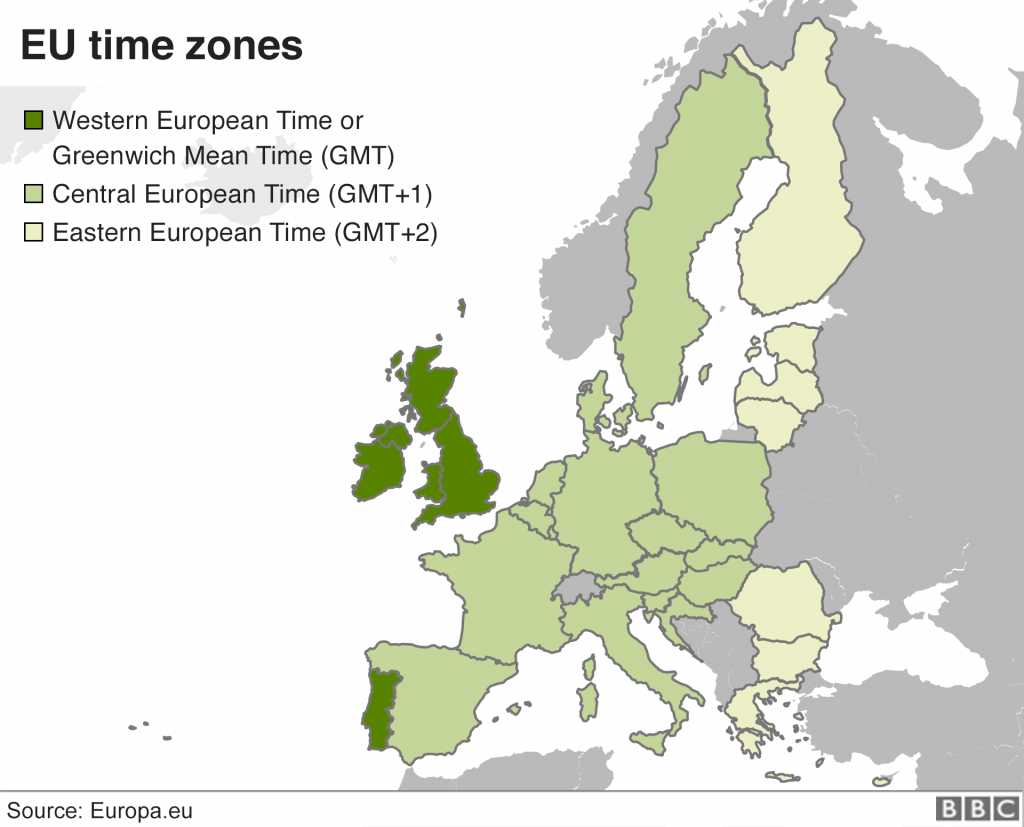
I did explore this subject in October last year and it is now on this blog history. Click on the link or browse to Week 42 in the October 2018 folder on the right.
The answer to the question I posed about what this plant is:
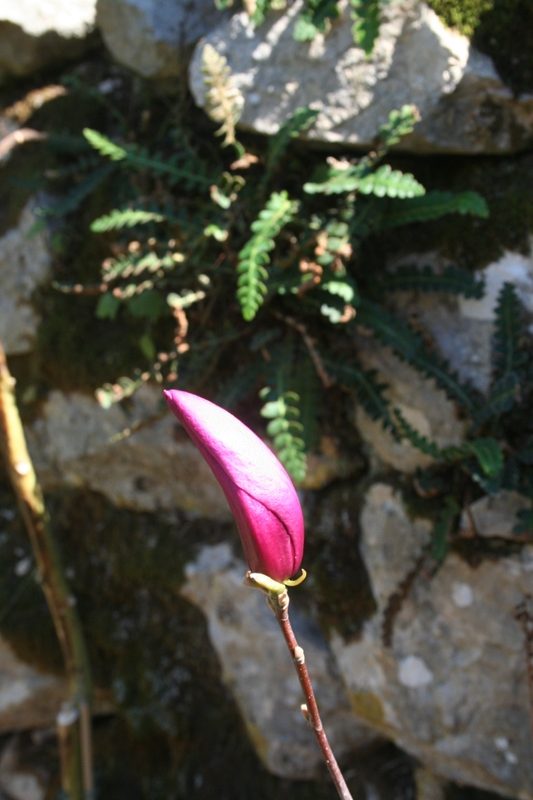
Well one reader at least got it right, it’s a Magnolia “Susan”. The purple canine tooth shaped bud opens to look look this:
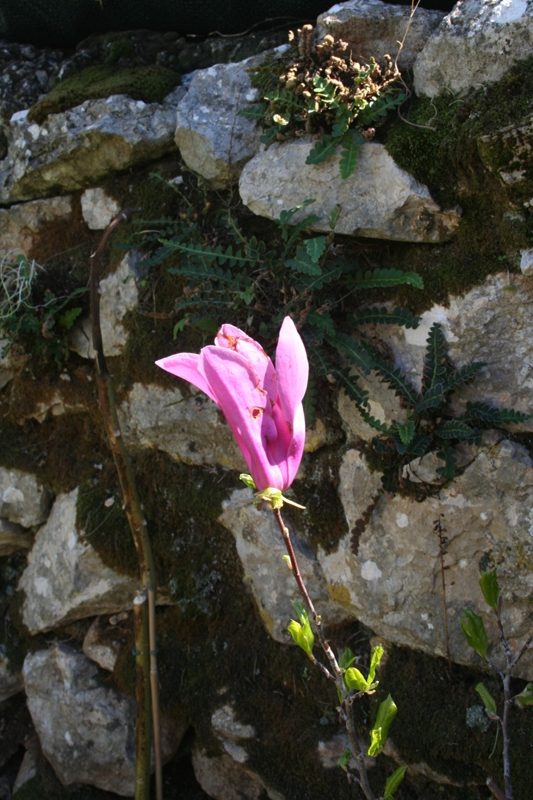
I took the photography after the day of rain we had on Tuesday, and sadly it looks a little past it’s best. There is only the one flower this year, but in 12 months time…..? The eventual height will be 5 meters, now just imagine the whole tree being covered with flowers. That will be worth a visit to see.
In the cottage garden area of the Top Orchard, the Jasmine Beesianum which I planted last week has it’s first flowers. Most people know Jasmine flowers because of their fabulous fragrance and because of their white star shape. This variety is fragrant but the colour is a deep maroon red and the flowers are smaller, but quite striking and unusual.
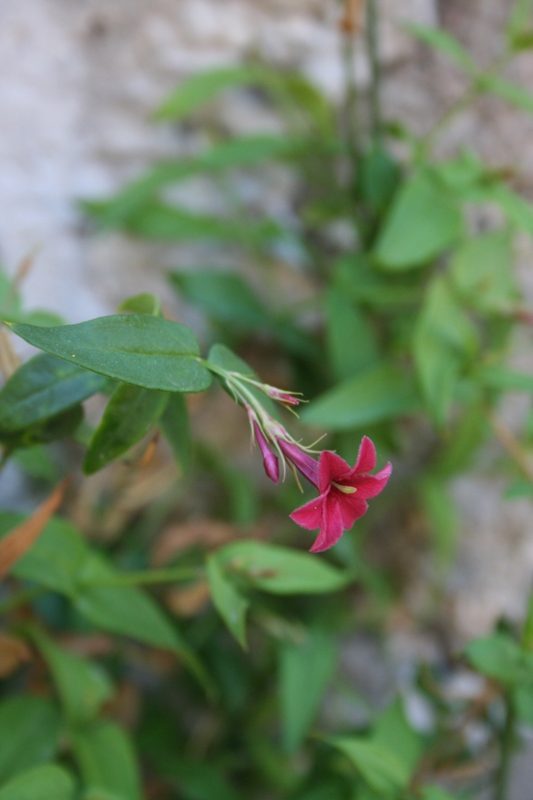
Everything is growing very quickly now, in the headlong rush to beat the summer heat.
My largest grape vine has burst into flower this week. However vine flowers are tiny and unless you are looking very closely, they are easy to miss.
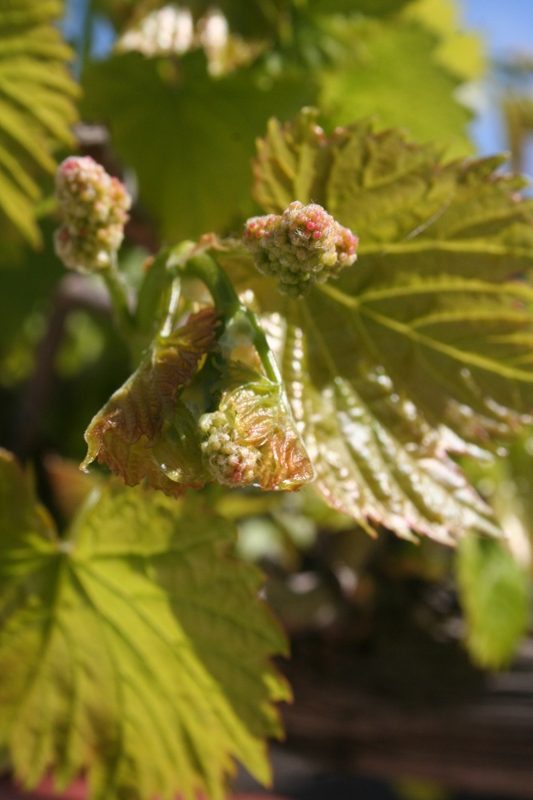
Garden plans
Several times over recent weeks I’ve been asked if I have a map or plan of all the orchards, then last week I was asked about a drone photo.
A couple of years ago, when I joined the Habitat Network, part of Cornell University, I created a full map of the orchards, with all the different habitats marked on it. Sadly the Habitat Network is no more. Their funding ran out in January this year and being unable to raise any more sponsorship, the web site has been closed down.
With the Top Orchard covering just under 1000 square meters (1200 square yards) trying to get all of it into a single aerial photo, with enough detail so you can make out individual plants, plus the other orchards is difficult.
We now have leaves on the trees, so there is lots of green cover. I haven’t taken any aerial photographs for almost a year because of a camera stabilisation hardware failure, so those I have are seriously out of date.

As work continues on the steps, cottage garden area, pond, as well as preparing for the building work, I think that at the moment I probably can’t manage it.
I will look through those I have and see if I can find something.
Path work
I’m still waiting for the small stones for my path to be delivered, but that hasn’t held up the work.
This week I’ve dug out and relocated all the top soil, back filled with the rough stones from near the steps and then bedded in pure sand.
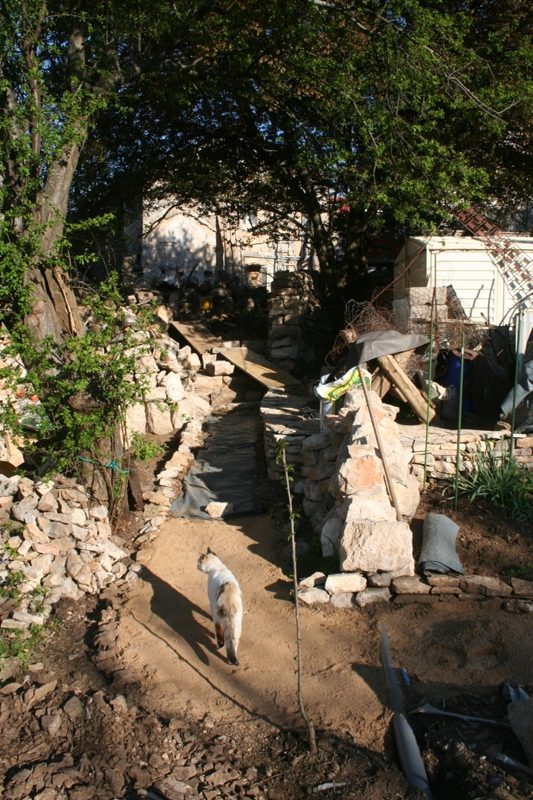
More plastic has gone on top as a weed barrier and to direct the rainfall to where I need it.
In digging out round the base of the steps, I’ve opened up enough space to start the next piece of the main wall. What I did discover is that there are almost no foundations on this side of the steps.
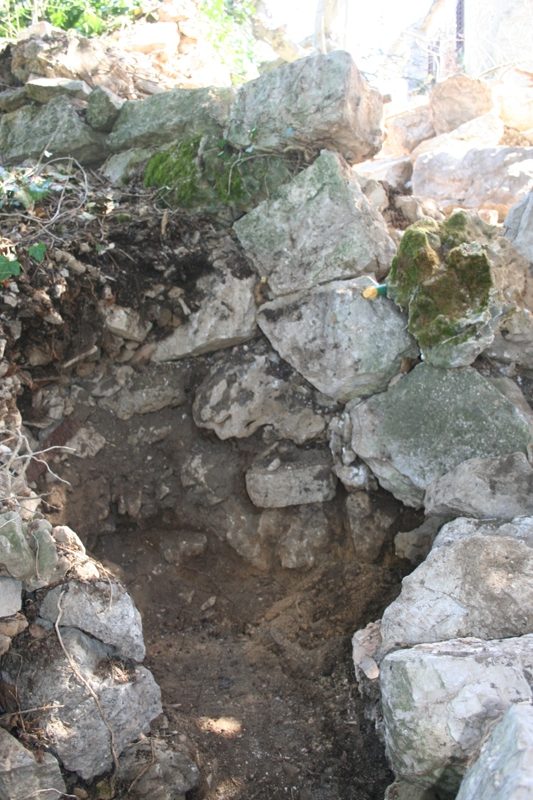
It should be remembered that when I started to make these steps, the wall was a continuous length separating the fold yard from the orchard. I have completely remodelled it, making a central opening, building the steps and developing a pathway into the orchard.
But the part I am now working on is the most difficult because over time it has been used as somewhere to dump stones, tin cans, medical waste – just about everything. Add to that the a covering of ivy and years of fallen leaves and I think you get the picture.
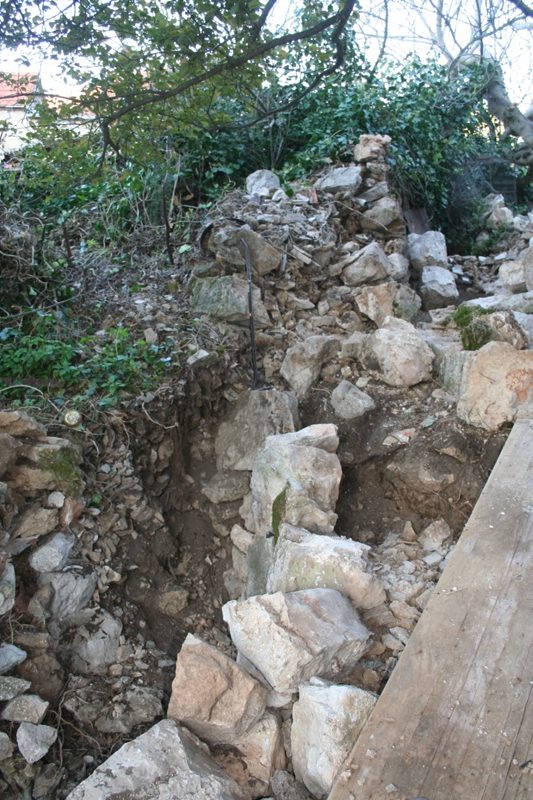
While moving some heavy top stones, I had a rock fall. The area I had cleared was filled with small stones, leafmould and rubbish. After digging it out again, I drew a rough curve in the soil, then started to move some large foundation stones into place.
The first row went together well. I back filled behind them with more of the sandstone spoil I dug out of the courtyard, them firmed it into place with a breaking hammer.
The second row also needs to be large stones but it has taken time to select the heavy stones, so they link together, then move them into position.
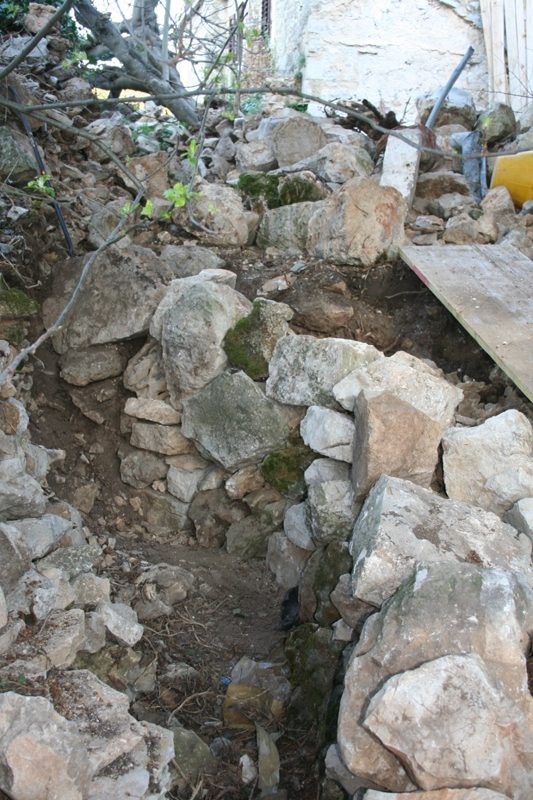
By the end of the week I have the third row in place and more spoil dumped behind to support the stones. I had to use some adaptive engineering to anchor a couple of large stones in place so they didn’t slide down before I was ready.
A heavy steel chain sling and a ratchet strap anchored to a tree did the trick.
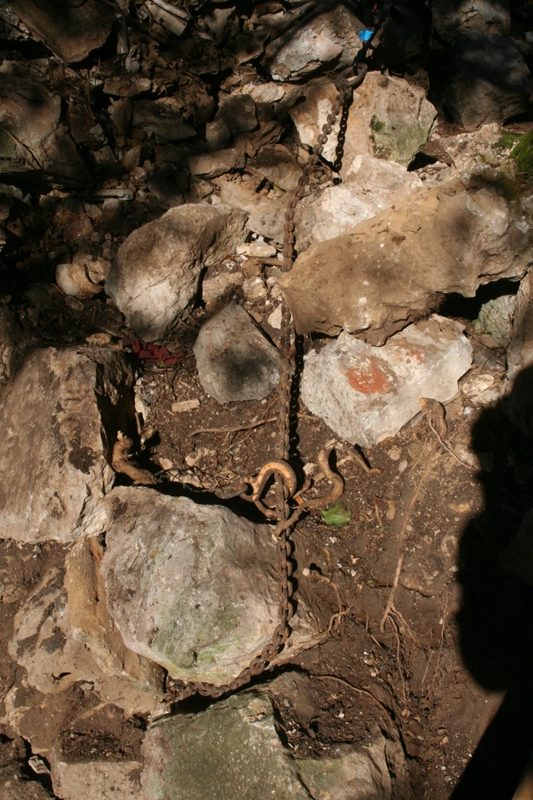
Earth Hour 6O+
Depending upon where in the world you are and when you read this, you may be in time to participate in Earth Hour 2019

This year the theme is #Connect2Earth
Most people recognise that the climate we experience is changing, although how this is felt varies in different parts of the world and even within individual countries.
The World Meteorological Organisation reported this week in their 25th State of the Climate report. They (WMO) say that the physical and financial impacts of global warming are accelerating.
I’m doing my bit for the environment. All my lights are “Low energy” and slowly but surely I am insulating rooms and installing double glazing. I do recycle everything I can and repair appliances/machines where ever I can too.

Turning the lights off for one hour, on one night in the year is really symbolism. But it is a reminder too, that protecting the planet needs to go on 365 days a year.
My garden and orchard plantings demonstrate this. When I came, There were just eight mature trees. One died and one I removed because it was diseased. Today I have six mature trees but I have planted 54 saplings and have another seven waiting in the nursery area.
There is the old saying that you “Plant plums for your sons and pears for your heirs”, alluding to the time in years past that it took for a young tree to mature and produce fruit.
Today with modern cultivars it is much quicker, but even so, trees were the first things I planted so they can ‘do their thing’ while I get on with other jobs. I have a lot more to do but I try to make sure everything is environmentally sensitive. NRC
One Response
Marcy
Such a great blog. The Jasmine is stunning. Thanks for sharing.